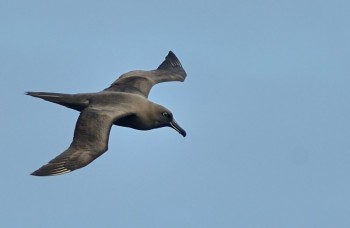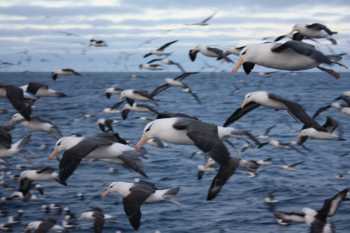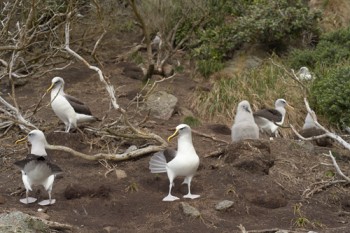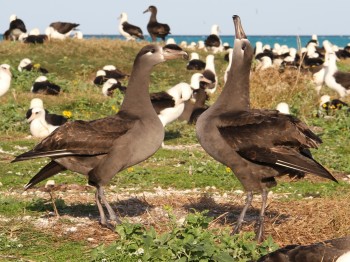Full (or empty?) house achieved: the last translocated chick has fledged. Here it is readying its wings for flight the day before on its flower-pot nest. Note the leg band to help track its fortunes.
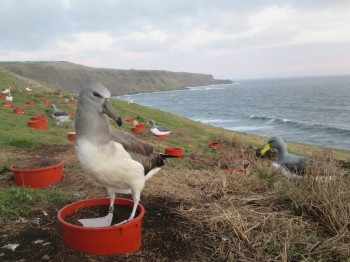
A total of 110 ACAP-listed and Vulnerable ChathamAlbatross Thalassarche eremita chicks was moved from the Pyramid, the species’ sole breeding site, to Point Gap on the main Chatham Island in 2014 and 2105 in an effort to establish a new breeding colony. The chicks were hand fed on fish and squid until they fledged, only six not surviving due to heat stress (click here).
Following this success the Chatham Islands Taiko Trust transferred a further 50 chicks for the third year of the project in February (click here).
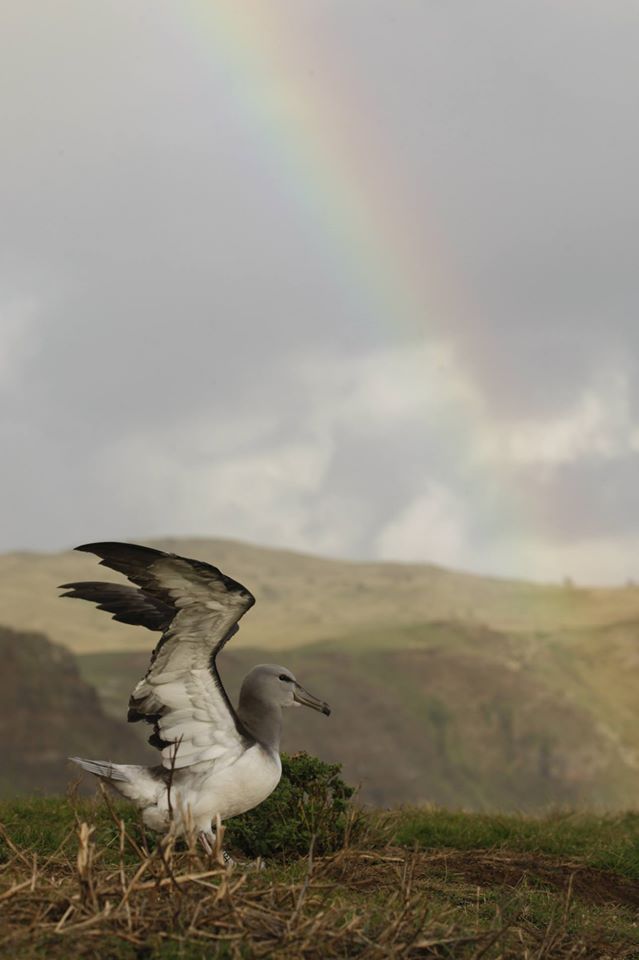
This year’s chicks have been fledging this month, with just one left expected to go by 15 April; the first two chicks fledged on 31 March. It is intended to continue translocations for a further two years.
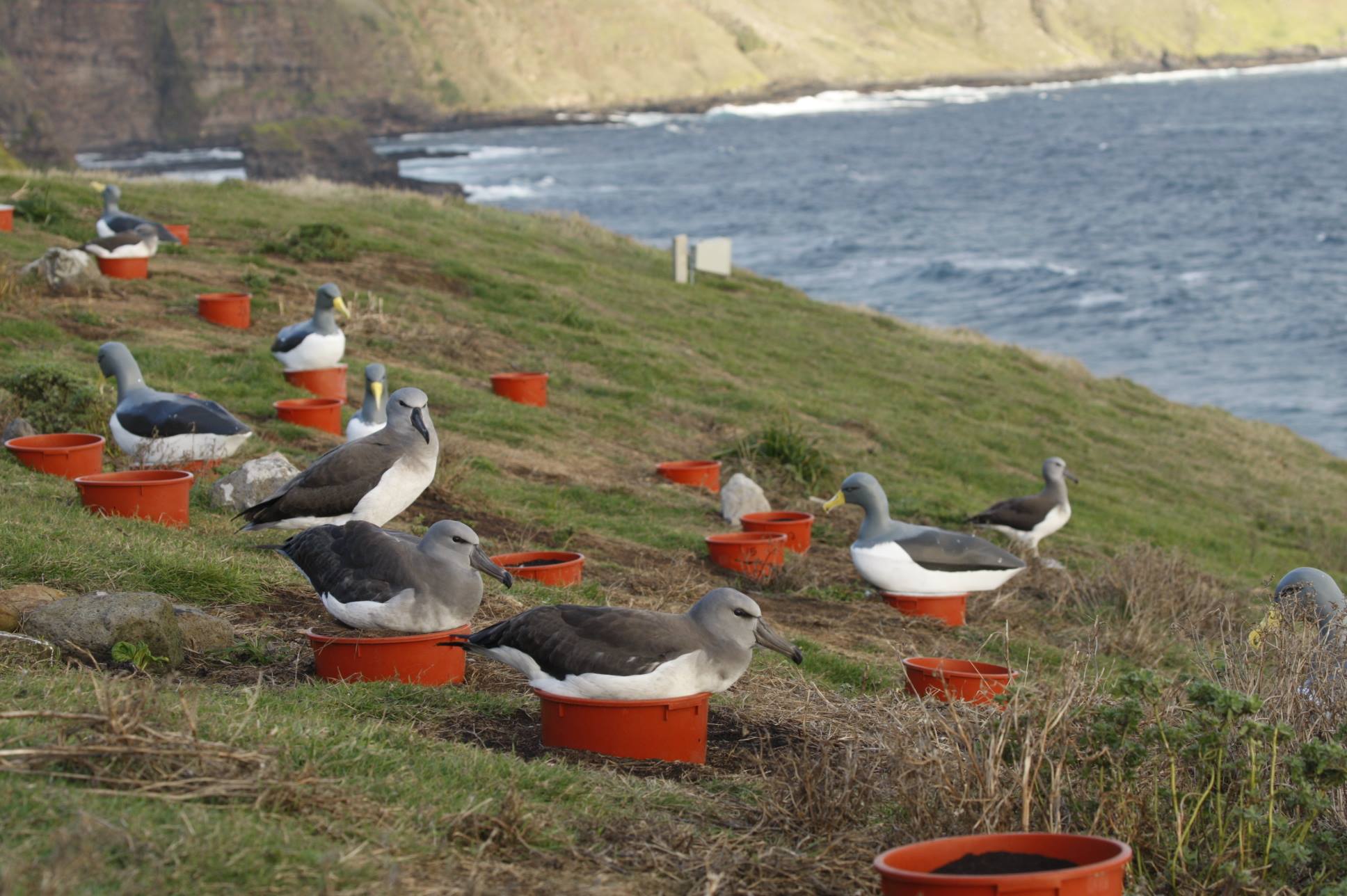
The last few chicks to fledge from the 2016 cohort among adult decoys, photographs courtesy of the Chatham Islands Taiko Trust
Access past news about the translocation project here. More photos of the 2016 translocation are on the Trust’s Facebook page.
Reference:
Bell, M. 2015. Establishing a new colony of Chatham Island Albatross in the Chatham Islands, New Zealand. Sea Swallow 64: 4-8.
John Cooper, ACAP Information Officer, 14 April 2016, updated 16 April 2016

 English
English  Français
Français  Español
Español 